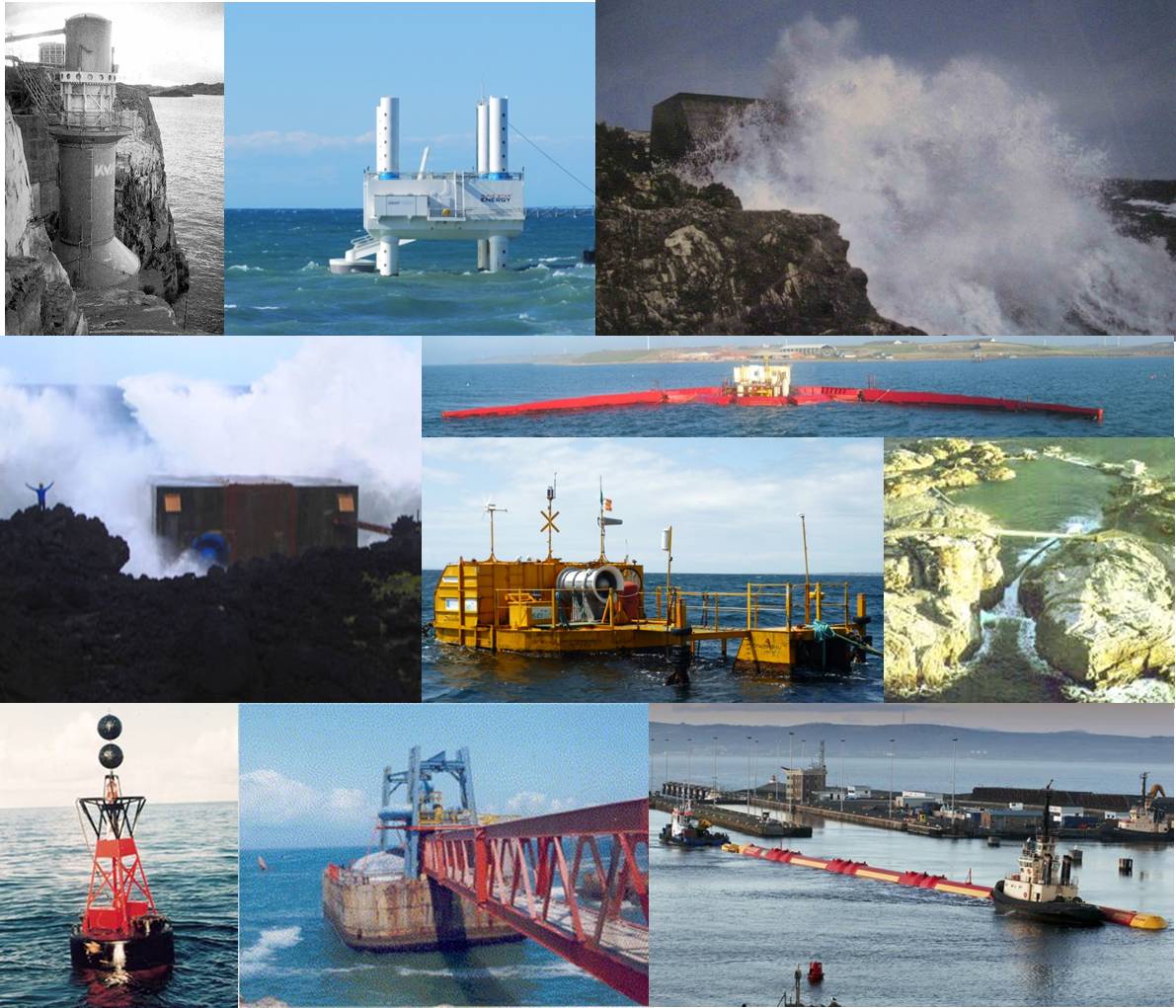Wave energy developments are characterised by numerous inventions.The first patent on wave energy was published in France in 1799 by Girard father and son. Ever since, great number of ideas to harness the energy in the waves have been conceived; however, only few of them have succeeded to be tested in the sea. From those deployments the sector has had numerous success stories but also many failures.
Among the sector´s achievements it is worth highlighting the following stories:
Some WECs have survived the ceaseless breaking of waves over nearly two decades; the Pico Plant was commissioned in 1999 and Limpet in 2000 and both are still in operation (Falcão, 2004).
Tapchan and Kværner pilot plants proved that committed wave energy programmes can succeed despite enormous oil and gas reserves (Ross, 1995).
Vizhinjam wave plant in India is the best example of a desalination plant powered by wave energy; it was commissioned in the early 90s and has been operational until 2005 (Sharmila et al., 2004).
Wavestar, Pico Plant and Mutriku, have proved – and documented – they can produce useful energy from the waves, with the following values for accumulated electricity production: Wavestar 53.5 MWh (up to December 2012) (Kramer et al., 2013), Pico 52 MWh (WavEC, 2012) and Mutriku 200 MWh.
OE Buoy and Wave Dragon have survived to the harsh sea environments for more than two or three winters (Nielsen, 2012), while others – the to 20 kW Chinese floating OWCs – have done it for a larger number of years (You et al., 2012). Wave Dragon has also proved a wave-to-wire efficiency of 18%, i.e. final production per incident wave energy (Frigaard et al., 2006).
Lastly, several technologies have attracted investors due to their performance capabilities (i.e. Pelamis, Oyster, CETO) (Nielsen, 2012).
Unfortunately, many of the sector´s failures, related to mooring breakings and WECs getting stranded in front of the public eyes, are retained and emphasised by the public and other stakeholders (Ross, 1995). Meanwhile, one of the biggest success stories of the sector is barely recalled. There are about three hundred OWCs navigational buoys functioning around the world in places where battery changing is inconvenient, lighting a 60 W bulb and driving a flashing unit, as designed by Commander Yoshio Masuda (Glendenning, 1978).
From left to right and from top to bottom: Kværner in Toftestallen, Norway; Wavestar in Hanstholm, Denmark; Limpet in Islay, United Kingdom; Pico Plant in Azores, Portugal; Wave Dragon in Nissum Bredning, Denmark; OE Buoy in Galway Bay, Ireland; Tapchan in Toftestallen; BD 102 in China; Vizhinjam in Kerala, India; and Pelamis in Orkney Islands, United Kingdom.
Continue reading: Advantages and disadvantages of wave energy
References:
Falcão A. F. (2004). “First-generation wave power plants: current status and R&D requirements”. Transactions of the ASME, Vol. 126, pp. 384-388.
Frigaard P., Tedd J., Kofoed J.P. and Friis-Madsen, E. (2006). “ years experience with energy production on the Nissum Bredning Wave Dragon prototype”, in Proceedings of the 4th Workshop of the Coordinated Action of Ocean Energy workshop (CA-OE), Lisbon.
Glendenning I. (1978). “Wave Power – A Real Alternative?”. Ocean Management, Vol., pp. 207-240.
Kramer M., Vidal E., Marquis L. and Frigaard P. (2013). “Status and perspectives for the Wavestar demonstrator at Hanstholm”. Abstract to the 10th European Wave and Tidal Energy Conference (EWTEC). Aalborg.
Nielsen K. (2012). “Ocean Energy Technology Study”. DanWEC; Technical Report No.1 for The Alliance for Offshore Renewables.
Ross D. (1995). “Power from the waves”. Oxford University Press.
Sharmila N., Jalihal P., Swamy A. and Ravindran M. (2004). “Wave powered desalination system”. Energy, Vol. 29 (11).
WavEC. (2012). Newsletter 17 of the Wave Energy Centre (WavEC), published on July 2012. [Online]: news.wavec.org/archive/news/index64-1.html [Accessed January 10th, 2013].
You Y., Sheng S., Wu B. and He Y. (2012). “Wave energy technology in China”. Philosophical Transactions of the Royal Society, Vol. 370.
